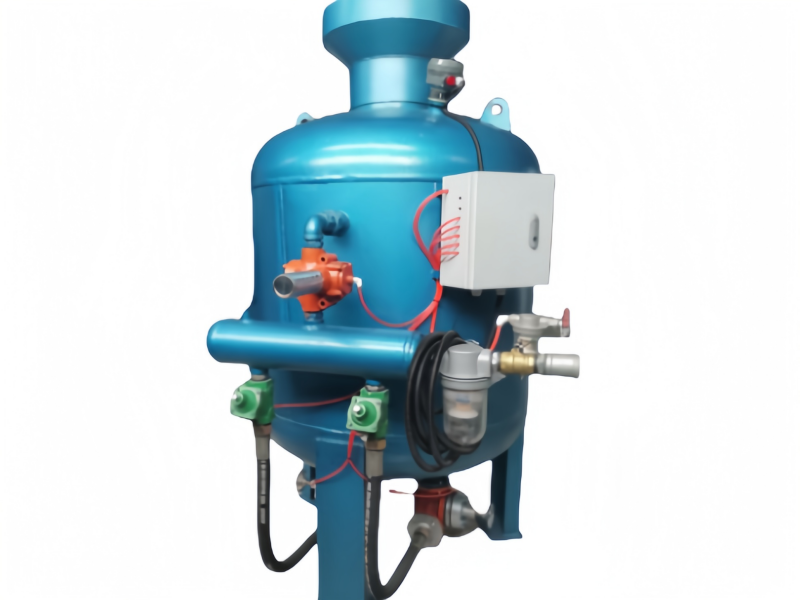

MIZHI
TECHNOLOGY
Hotline
+86-136-8495-9862

What is a Sandblasting Pot?
A sandblasting pot, also known as a blast pot, is a specialized pressure vessel used to hold and propel abrasive media for surface preparation. It is a crucial component in the sandblasting process, which involves using compressed air to force abrasive materials (such as sand, grit, or steel shot) at high speed onto a surface to clean, smooth, or roughen it.
Key Applications
1.Surface Preparation:
Cleaning and roughening surfaces to improve adhesion of coatings and paints.
2.Corrosion Removal:
Removing rust and corrosion from metal surfaces to restore their integrity.
3.Weld Seam Smoothing:
Smoothing and contouring weld seams to prevent stress concentrations and improve appearance.
4.Mold and Casting Cleaning:
Removing mold sand, parting lines, and residue from castings.
5.Paint and Coating Removal:
Stripping old paint and coatings from surfaces to prepare them for new applications.



A dustless water sand blasting pot, also known as a wet blast pot, works on the principle of combining water with abrasive media and using compressed air to propel the mixture onto a surface at high speed to achieve cleaning, stripping or other surface preparation tasks. Here's a detailed explanation of its working principle:
Blasting Process
1.When the air compressor starts working, it pressurizes the blast pot and generates a stream of high-pressure air. This high-pressure air flows into the blast pot and mixes with the abrasive media and water.
2.The abrasive media and water form a slurry-like mixture. The high-pressure air acts as the propelling force, carrying the mixture through the blast hose and out of the nozzle at high speed.
3.As the mixture strikes the surface to be treated, the water in the system plays a crucial role. It helps to cushion the impact of the abrasive media on the surface, reducing friction and heat generation. This prevents damage to delicate materials like metal or fiberglass and avoids warping caused by excessive heat.
4.The water also effectively captures and suppresses dust particles produced during the blasting process. When the abrasive media impacts the surface and breaks apart or grinds the contaminants, the dust particles are surrounded and bound by the water, preventing them from becoming airborne. This significantly reduces dust pollution in the surrounding environment and minimizes the risk of dust-related health problems for operators and nearby personnel.